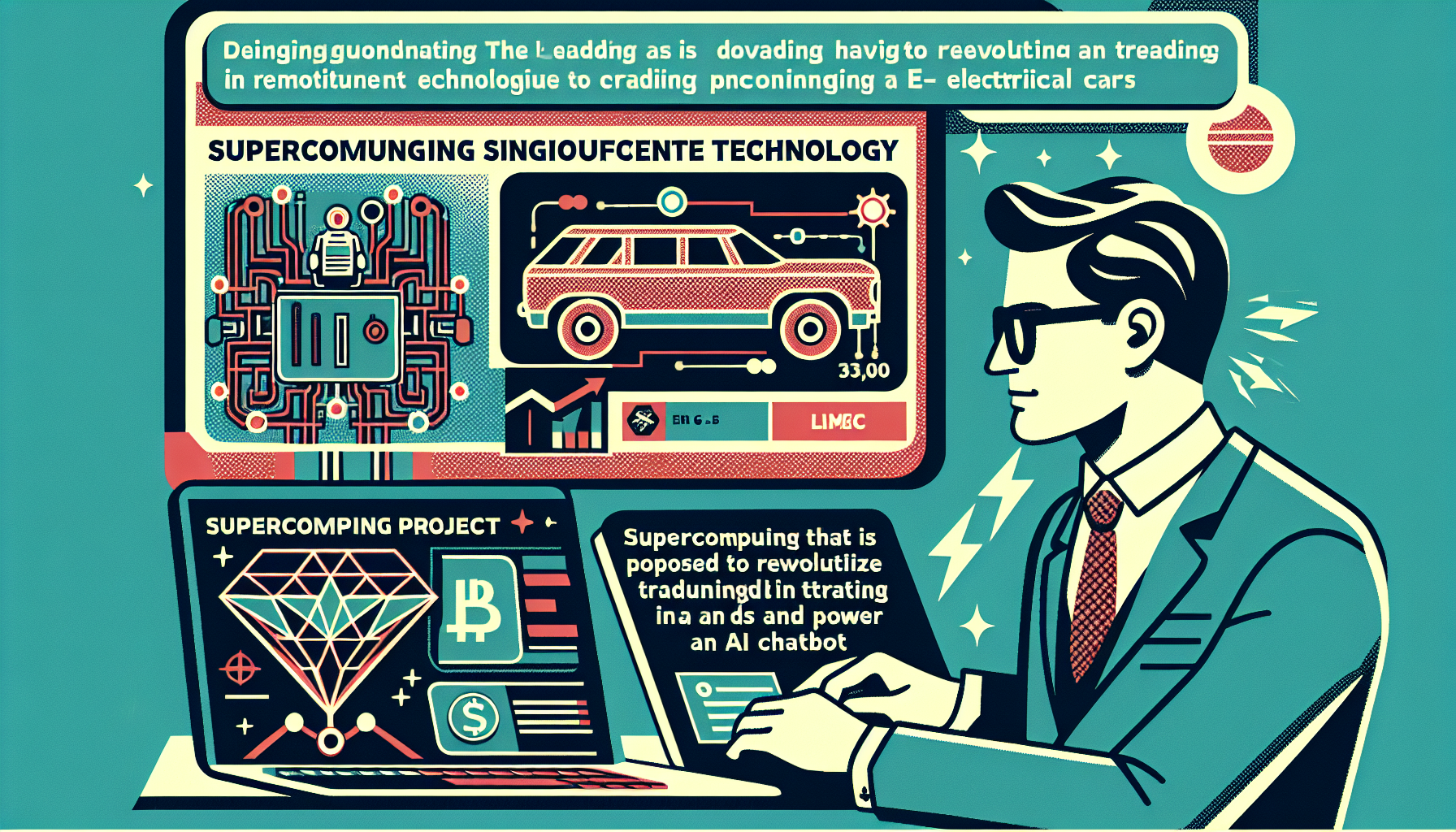Elon Musk, renowned for his groundbreaking ideas, is once again leading a significant technological charge. His latest supercomputing projects aim to revolutionize Tesla’s self-driving technology and power the new AI chatbot, Grok, through his venture, xAI.
### Tesla’s Dojo Supercomputer
Musk has invested heavily in the Dojo supercomputer at Tesla. This tailor-made system is crucial for training the neural networks that drive Tesla’s Full Self-Driving (FSD) technology. As Tesla gears up to introduce its robotaxi in October 2024, the Dojo supercomputer becomes even more essential.
The Dojo system is built around Tesla’s custom D1 chips, created by Taiwan Semiconductor Manufacturing Company (TSMC) using advanced 7 nanometer nodes. Each D1 chip holds 50 billion transistors and spans a large die size of 645 millimeters squared. Tesla integrates 25 of these powerful chips into a single tile, resulting in a system that offers 9 petaflops of power and 36 terabytes per second of bandwidth.
To further elevate its AI training, Tesla has deployed over 35,000 NVIDIA H100 GPUs, with plans to increase this to around 85,000 by the end of 2024. This extensive infrastructure is vital for processing the enormous amounts of video data collected from Tesla’s vehicles, helping to refine the FSD software.
### xAI’s Colossus Supercomputer
In parallel, Musk has introduced the Colossus supercomputer under xAI, based in Memphis, Tennessee. Claimed to be the world’s most powerful AI training system, Colossus initially operates with 100,000 NVIDIA H100 GPUs, with plans to double this number soon.
Constructed in just four months, Colossus is designed to train xAI’s large language model (LLM), Grok. This model aims to compete with leading AI systems like OpenAI’s GPT-4 and is known for its strong stance on free speech. The immense computational strength of Colossus ensures that Grok will be incredibly performant and capable.
### Environmental and Community Concerns
The technological feats of Colossus come with environmental costs. Operating Colossus in Memphis requires about 150 megawatts of electricity and a million gallons of water each day. This has sparked concerns over increased air pollution and the burden on local resources. Critics point out that xAI’s use of gas-powered turbines without proper air permits has worsened pollution, pushing smog levels above national standards.
### Collaboration and Future Plans
Musk sees the potential for synergy between Tesla and xAI, where the power of Colossus could benefit Tesla’s AI endeavors. Such collaboration could accelerate developments in both generative AI and autonomous driving AI, placing Musk’s ventures at the leading edge of AI innovation.
xAI has also achieved substantial financial success, with a $6 billion Series B funding round in May 2024, raising its valuation to $24 billion. This funding underlines the strong belief in xAI’s mission to “understand the universe” and “accelerate human scientific discovery.”
### Conclusion
Elon Musk’s supercomputing projects are poised to transform AI technology significantly. These initiatives promise to enhance Tesla’s autonomous driving capabilities and xAI’s advanced AI models. However, the benefits come with notable environmental and community impacts. As Musk continues to explore the extremes of AI, the world will carefully watch the evolution of these technologies and their far-reaching effects.

Leave a Reply